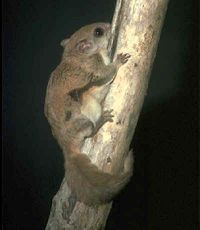
Photo from wikipedia
Examples of photoluminescence (PL) are being reported with increasing frequency in a wide range of organisms from diverse ecosystems. However, the chemical basis of this PL remains poorly defined, and… Click to show full abstract
Examples of photoluminescence (PL) are being reported with increasing frequency in a wide range of organisms from diverse ecosystems. However, the chemical basis of this PL remains poorly defined, and our understanding of its potential ecological function is still superficial. Amongst mammals, recent analyses have identified free-base porphyrins as the compounds responsible for the reddish ultraviolet-induced photoluminescence (UV-PL) observed in the pelage of springhares and hedgehogs. However, the localization of the pigments within the hair largely remains to be determined. Here we use photoluminescence multispectral imaging emission and excitation spectroscopy to detect, map and characterize porphyrinic compounds in skin appendages in situ. We also document new cases of mammalian UV-PL caused by free-base porphyrins in distantly related species. Spatial distribution of the UV-PL is strongly suggestive of an endogenous origin of the porphyrinic compounds. We argue that reddish UV-PL is predominantly observed in crepuscular and nocturnal mammals because porphyrins are photodegradable. Consequently, this phenomenon may not have a specific function in intra- or interspecific communication but rather represents a byproduct of potentially widespread physiological processes. This article is protected by copyright. All rights reserved.
Journal Title: Integrative zoology
Year Published: 2022
Link to full text (if available)
Share on Social Media: Sign Up to like & get
recommendations!